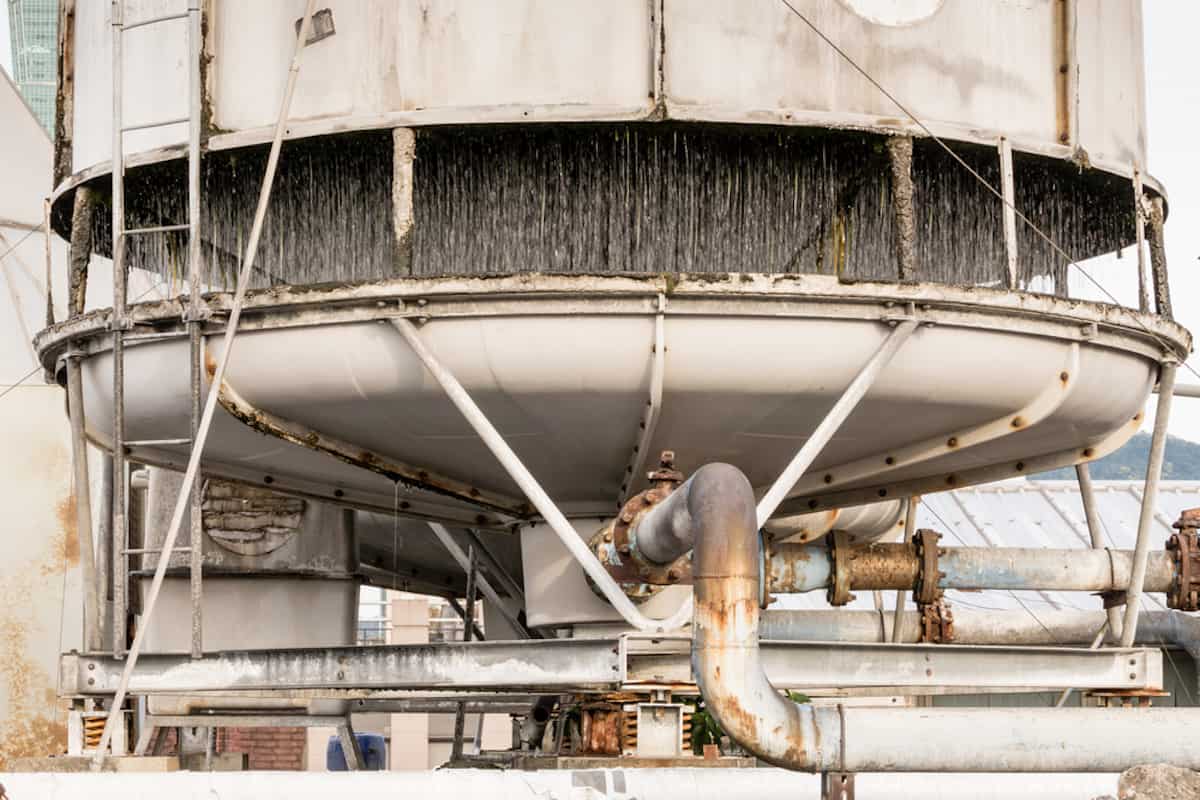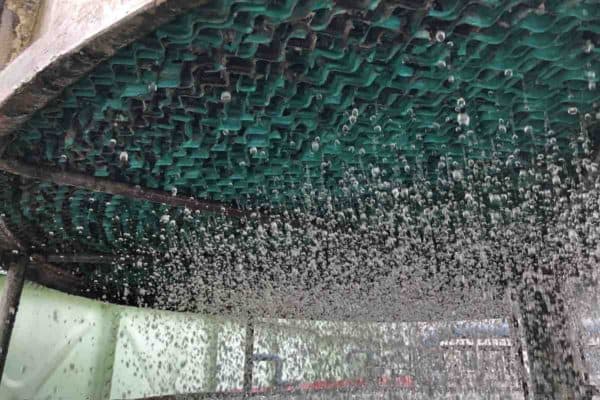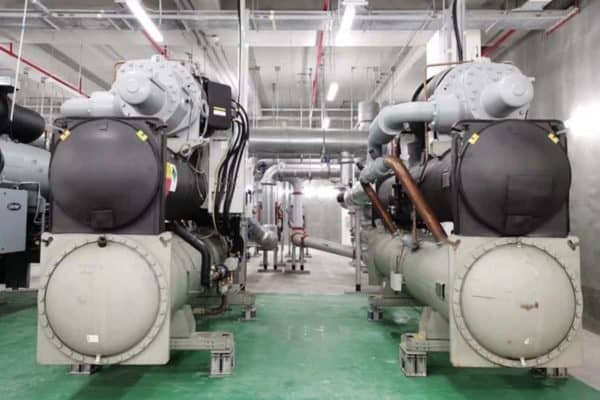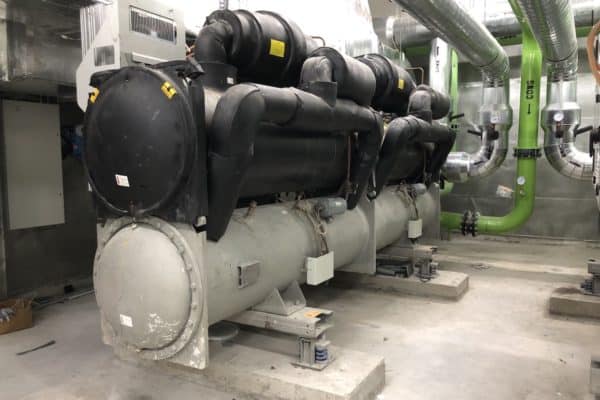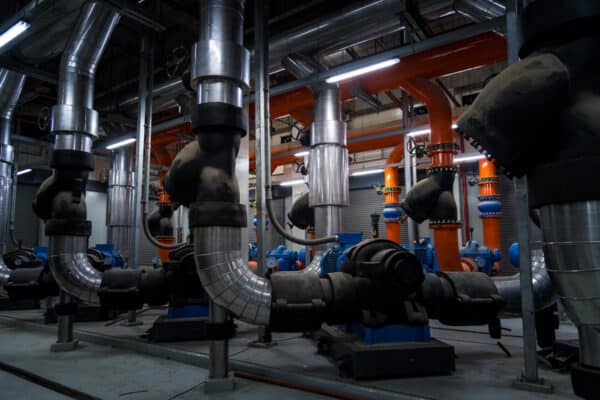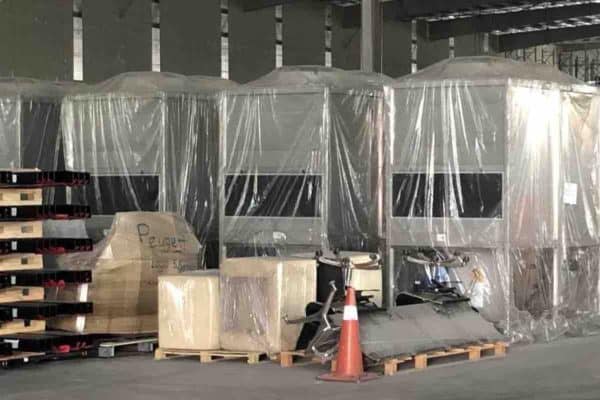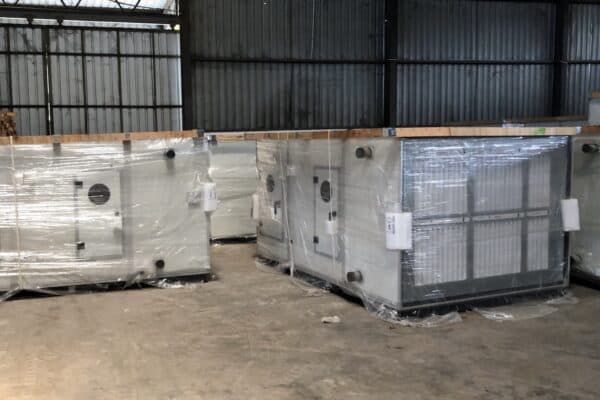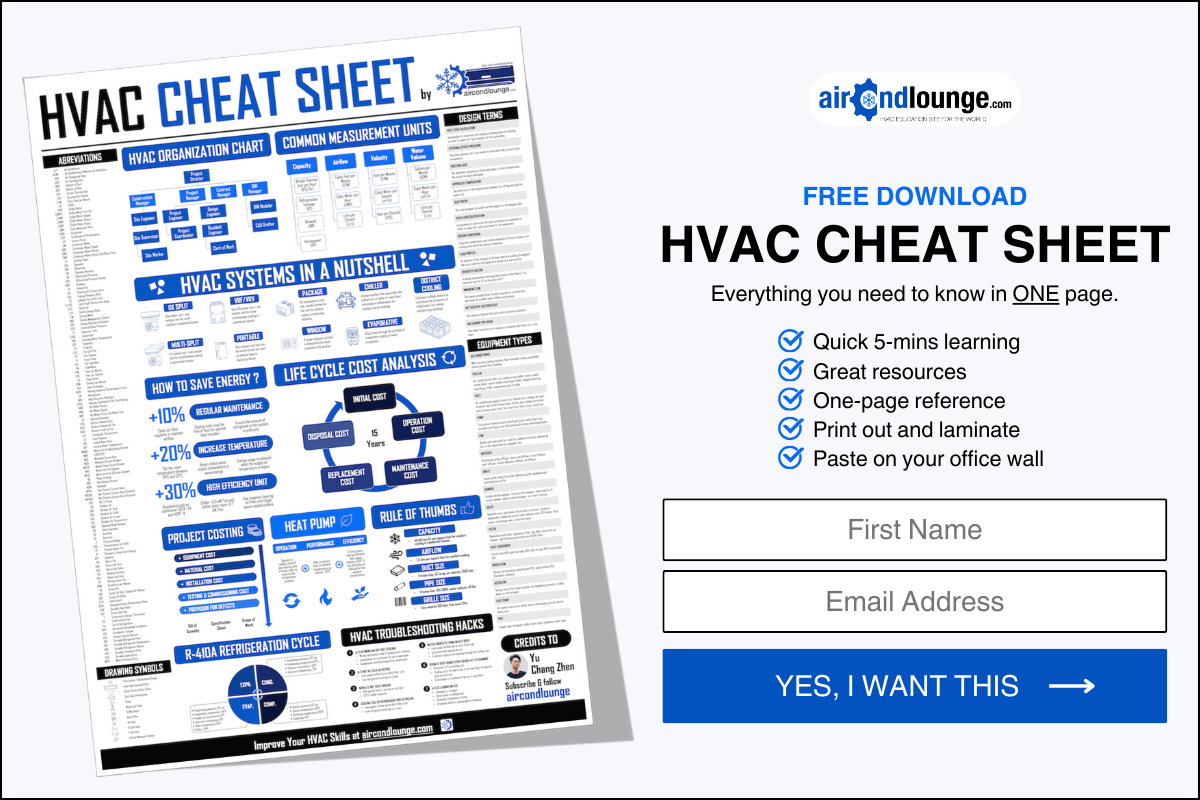Why Do Cooling Towers Have a Blowdown Valve?
Cooling towers are one of the major components of the chilled water system. Many people encounter the blowdown valve of cooling towers but they’re not entirely sure why it is needed. So, I did some research.
The blowdown valve of cooling towers is used to automatically discharge a small amount of condenser water at the bottom of the cooling tower basin periodically in order to remove excess minerals that cause scaling and corrosion.
Cooling tower blowdown is essential in maintaining good condenser water quality so that the chilled water system can perform at the most optimal state.
What is the Purpose of Blowdown in Cooling Towers?
Cooling towers work by the principle of evaporative cooling. Hence, evaporation loss is inevitable in cooling towers. See How Cooling Towers Work?.
When the condenser water evaporates at the cooling tower, it leaves behind minerals. This phenomenon is similar to the boiling of seawater. Once all of the seawater has evaporated, what’s left behind is salt.
As the condenser water evaporates, the total amount of condenser water in the system reduces. Once the water level drops to a certain point, the float valve in the cooling tower basin will activate to take in new water from the makeup water tank.
This process keeps repeating while the chilled water system is in operation.
As more and more minerals are left behind in the system due to the evaporation of condenser water, cooling towers use a blowdown valve to get rid of the excessive minerals that settle at the bottom of the basin.
But, what about the water treatment system?
The water treatment system in HVAC can be separated into two sections; a) chilled water treatment and b) condenser water treatment.
Water treatment for chilled water is simple. Most of the time, chemicals such as corrosion inhibitors are added to the chilled water piping system during the commissioning stage to reduce the corrosiveness of the chilled water and protect the chilled water pipes.
For chilled water, the water treatment process is often done once unless there is a breach or repair.
On the other hand, because condenser water runs in an open loop, it is more prone to contamination. Thus, water treatment is consistently needed for the condenser water pipeline.
However, chemicals such as corrosion inhibitors, microbiological growth control agents and even scaling inhibitors are not able to get rid of the excessive minerals caused by the evaporation of the condenser water at the cooling tower.
Therefore, blowdown is still required to remove the excessive minerals left in the system by flushing out a small amount of condenser water at the bottom of the cooling tower basin where excess minerals settle.
Blowdown is also known as bleedoff.
While inhibitors control the growth of microorganisms, blowdown controls the following parameters:
| Parameter | Limit |
|---|---|
| PH Level | 7.0 to 9.0 |
| Total Dissolved Solids (TDS) | < 800 ppm |
| Total Alkalinity | < 300 ppm |
| Chloride | < 180 ppm |
| Silica | < 150 ppm |
| Total Hardness | < 300 ppm |
The PH level of cooling tower condenser water must be controlled in between 7 and 9. Low PH makes the condenser water corrosive while high PH cause scaling.
Total dissolved solids (TDS) are the sum of organic and inorganic materials such as metals, minerals, salts and ions. A high amount of TDS causes scaling. The TDS of cooling tower condenser water should be limited to below 800 ppm.
Total alkalinity is the sum of bicarbonate, carbonate and hydroxide ions which prevent the condenser water from becoming too acidic. However, too much of it will cause high PH and lead to scaling. The total alkalinity of cooling tower condenser water should be limited to below 300 ppm.
A high amount of Chloride and Silica in the condenser water will cause corrosion. The amount of Chloride and Silica in cooling tower condenser water should be limited to below 180 ppm and 150 ppm respectively.
Total hardness in water is mainly the amount of Calcium and Magnesium Ions. Too much of it will cause scaling. The total hardness of cooling tower condenser water should be limited to below 300 ppm.
All and all, there are many harmful substances that chemical or non-chemical water treatments are unable to resolve. Hence, blowdown is the only way to remove these excessive minerals from the system.
On a side note, if you want to quickly learn about chilled water system, you can get my Chilled Water System (eBook). If you’re into design, you can enroll in my Chilled Water System Design Course where I teach you various design procedures with tons of examples.
Chilled Water System Design Course
Learn how to design a chilled water system with AHU/FCU selection, chiller sizing, cooling tower sizing, pump sizing, piping design, ductwork design and more.
Is Cooling Tower Blowdown Continuous?
Cooling tower blowdown is usually controlled by a solenoid valve that depends on the electrical conductivity of the condenser water.
A conductivity controller constantly monitors the electrical conductivity of the condenser water. If the electrical conductivity of the condenser water exceeds 2000 µS (microSiemens), it indicates that there are excessive minerals in the water and hence, the solenoid valve will open to let the condenser water drain at the bottom of the cooling tower basin.
Once the conductivity of the condenser water returns back to the default setpoint, the solenoid valve will close and the blowdown stops.
Such a process may occur once a day or so depending on the incoming water quality.
What is Blowdown Rate in Cooling Towers?
Blowdown rate is the percentage of water loss due to blowdown in cooling towers.
Generally, the blowdown rate of cooling towers is less than 0.3% of the cooling tower’s water flow rate. So, if the cooling tower has a water flow rate of 730 m3/hr (3214 gpm), the amount of water loss due to blowdown is expected to be around 2 m3/hr (8.8 gpm).
How to Reduce Cooling Tower Blowdown?
The amount of water loss due to blowdown is depending on the incoming water quality. If the water replenishing into the condenser water pipeline is high in minerals, a higher frequency of blowdown is required.
Although the effect is negligible, low ambient dry-bulb temperatures can reduce cooling tower blowdown.
The evaporation loss of cooling towers is affected by the ambient dry-bulb temperature. The higher the ambient dry bulb temperature, the higher the rate of evaporation loss.
Since the water loss due to evaporation is replenished by the makeup water, high evaporation loss will introduce more minerals into the system thereby increasing the cooling tower blowdown rate.
However, the ambient dry bulb temperature is geographical-dependent. Hence, low blowdown rates only occur uncontrollably on cold days.
Nonetheless, cleaning cooling towers as well as the condenser tube of chillers regularly can help remove excess minerals that trigger the automatic blowdown system.
Once again, you can get my Chilled Water System (eBook) to quickly learn more about chilled water system. But, if you want to learn how to design a chilled water system from start to end, I encourage you check out my Chilled Water System Design Course.
Chilled Water System Design Course
Learn how to design a chilled water system with AHU/FCU selection, chiller sizing, cooling tower sizing, pump sizing, piping design, ductwork design and more.
If you have anything to add (or ask) about this topic, leave a comment down below!


